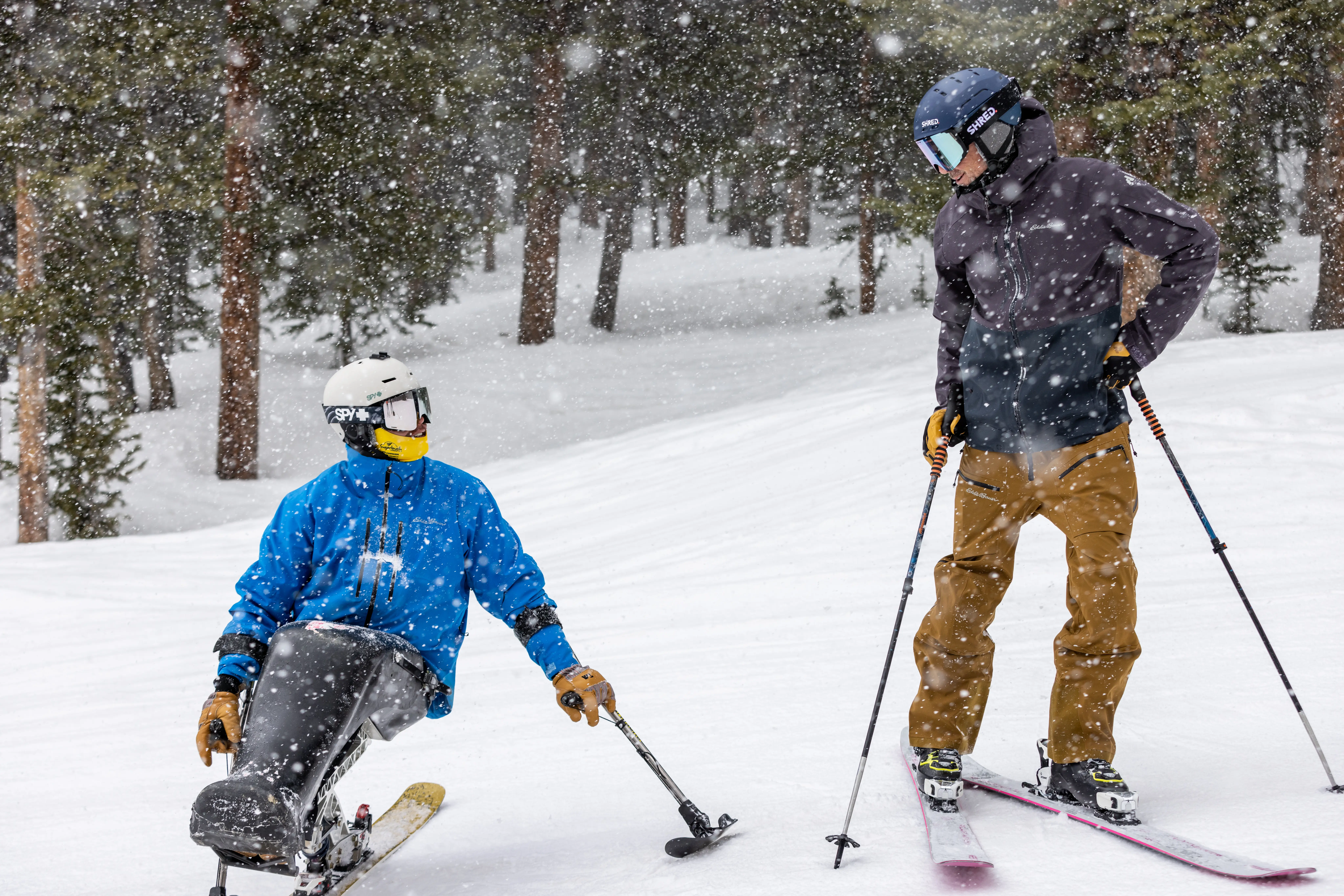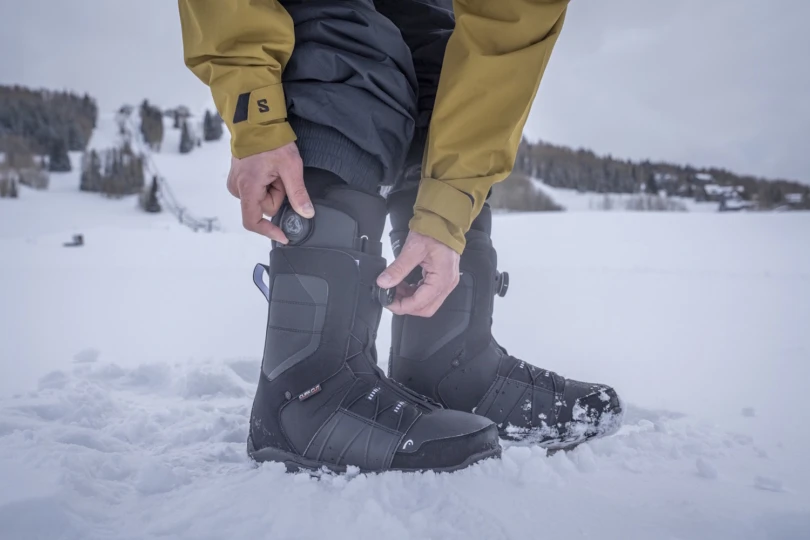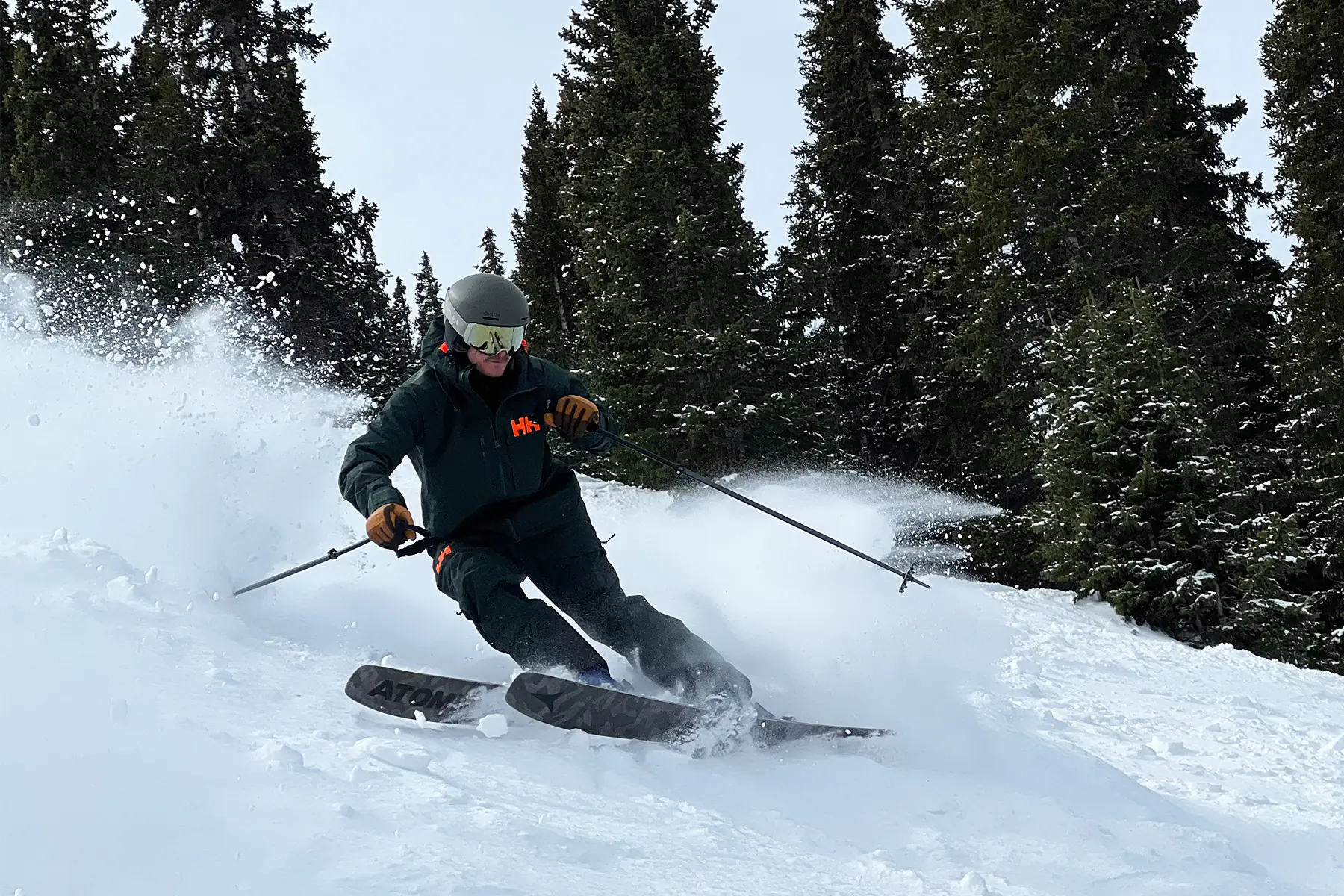How many times have you walked or skied past someone in a sit-ski at the base of the ski area without giving it a second thought? Yeah, me too.
If you are familiar with my writing, you know one thing I do often is venture out of my comfort zone, whether that means learning a new martial art at the age of 50, or learning to sit ski after more than 30 years as a stand-up skier.
I’m always up to the challenge and the experience in the hopes that it will somehow make me a better athlete, a better friend, or a more empathetic person. Spending a day on the mountain with Trevor Kennison was my latest experience — and it was a blast.
If you don’t follow everyone in the world of freeskiing, Kennison is a professional mono-ski sit-skier, although he doesn’t personally make the differentiation between mono and double. And like every truly great athlete, the proof is in the pudding, not in the terminology.
Although, now that I’ve tried it, the mono-ski is way harder to ride and master than the double. Especially without anyone riding brakes in the back, or to give an assist across the flats. Once I realized how hard this was, I had a new level of respect not just for Kennison, but for all sit-ski athletes.
Curious how sit-skiing — whether mono or double — works? Well, I hit some snow with Kennison to find out.
Background: Who Is Trevor Kennison?
Trevor Kennison grew up in New Hampshire, an athletic kid, though he didn’t grow up ski racing like so many professional snowsport athletes. He loved playing basketball, riding dirt bikes, snowboarding, and competitive swimming, until several shoulder injuries brought that chapter to a close. He moved out to Colorado after high school. In 2014 at the age of 22, he fractured his back in two places and punctured his spinal cord after a mishap off a large kicker in the backcountry on Vail Pass.
Fortunately, his self-sufficient upbringing and positive attitude would be the driving force that would enable him to not only survive after his accident, but thrive. After his accident, he drove himself home from Craig Hospital, learning to become completely independent as someone paralyzed from the waist down, learned to play wheelchair basketball, learned sit-skiing, and more.
After 2014, Kennison tried ski racing as a sit-skier, but quickly found that the terrain park, the backcountry, and competitions such as the X-Games were much more his style. As he began to progress and participate in comps, in 2019, he was able to enter the holy grail of freeride: Kings and Queens of Corbet’s Couloir in Jackson Hole, Wyo.
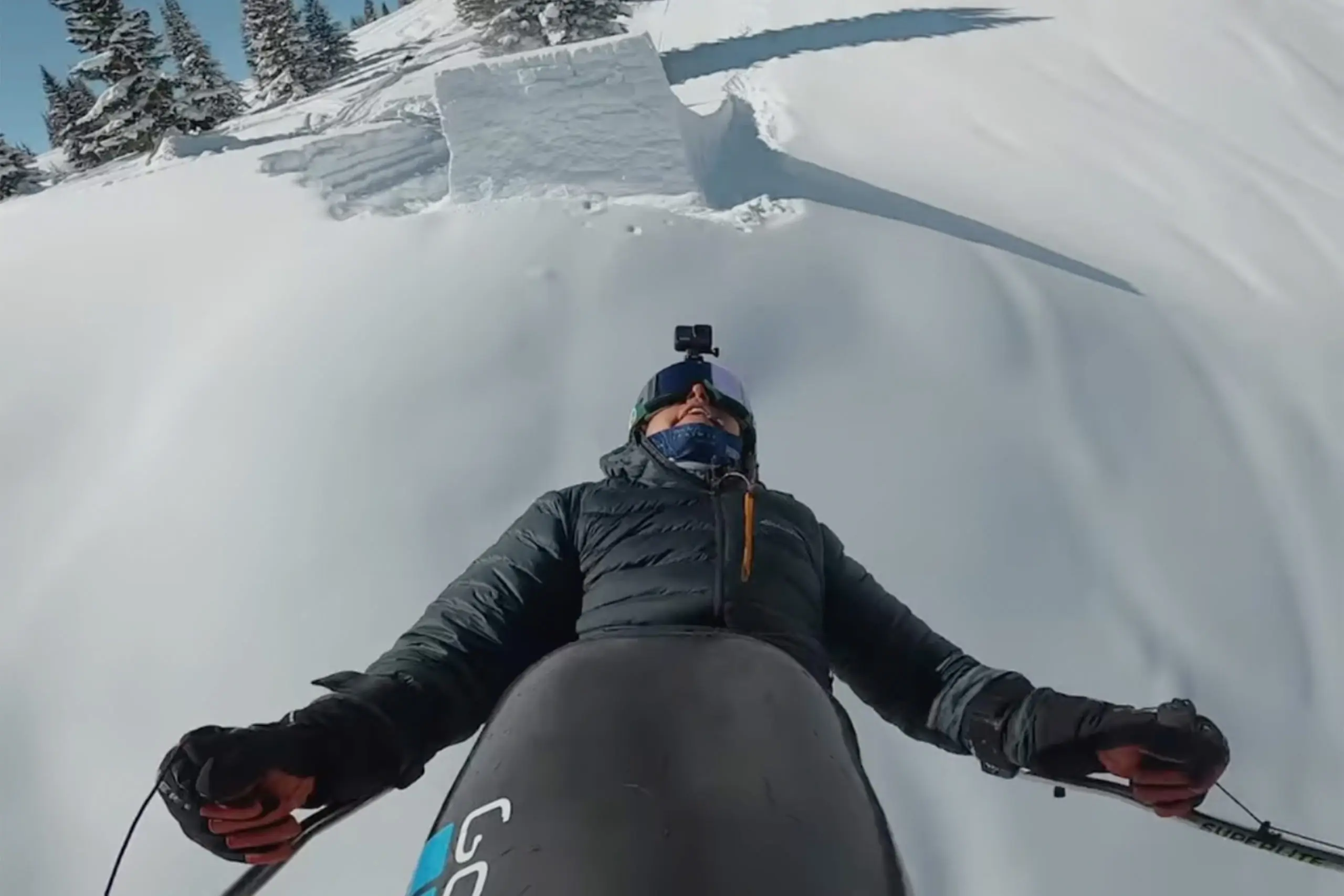
From there, he began landing sponsorships and filmmaking contracts, and things really began to take off. He moved to Winter Park where he currently resides and is sponsored by Eddie Bauer, Fat Tire, and others.
Trevor’s independent drive and positive attitude are infectious, and that’s part of what has led to his almost cult following, especially among the grom freeskier scene (as evidenced by his massive Instagram following).
The Challenge of Riding the Sit-Ski
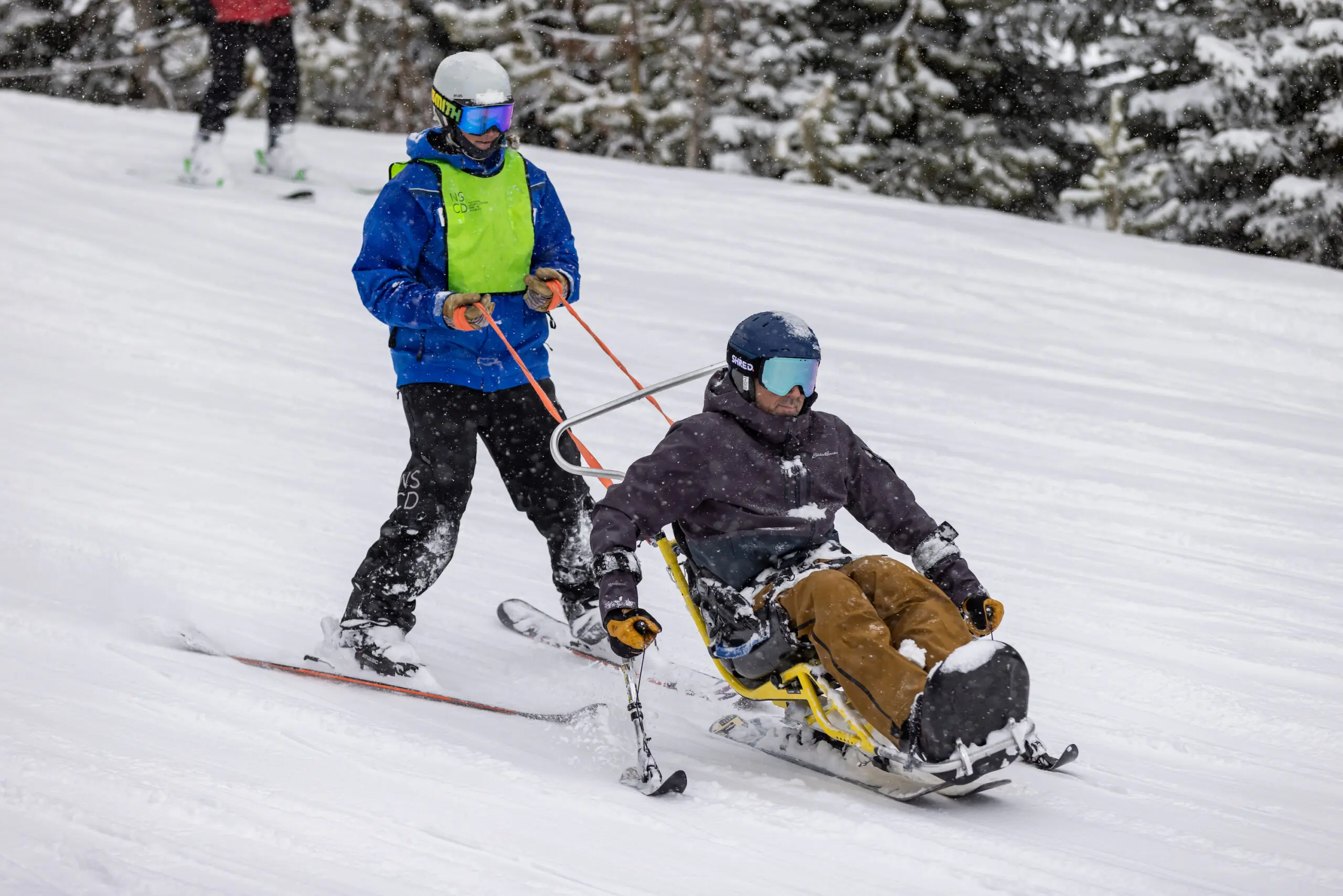
Riding in a sit ski feels extremely vulnerable at first. You have to get accustomed to seeing the world from what was previously waist level, at now eye level — but it quickly became, at least for me, liberating in its own way.
The double-ski sit ski is shockingly stable, especially at speed. And by the end of the day, my trusted guardian from the National Sports Center for the Disabled (NSCD) holding the straps behind me was only there to provide the brakes, just in case. And, to help me through the flats and up onto the lift — pieces of the puzzle that Kennison does unassisted.
Once I realized I had my own balance and was making turns on my own, it was game on. I don’t quite know what to compare it to, except whitewater kayaking … including that very off-putting feeling of having your legs trapped inside a small space and then plunging yourself toward the force of gravity into the unknown. It takes some getting used to.
Turns are controlled by micro-movements of the hips, shoulders, and head, much like a stand-up skier controls turns with micro pressure in the big toes. But as Trevor says, “Use what you’ve got,” including upper body strength, and look where you want to go.
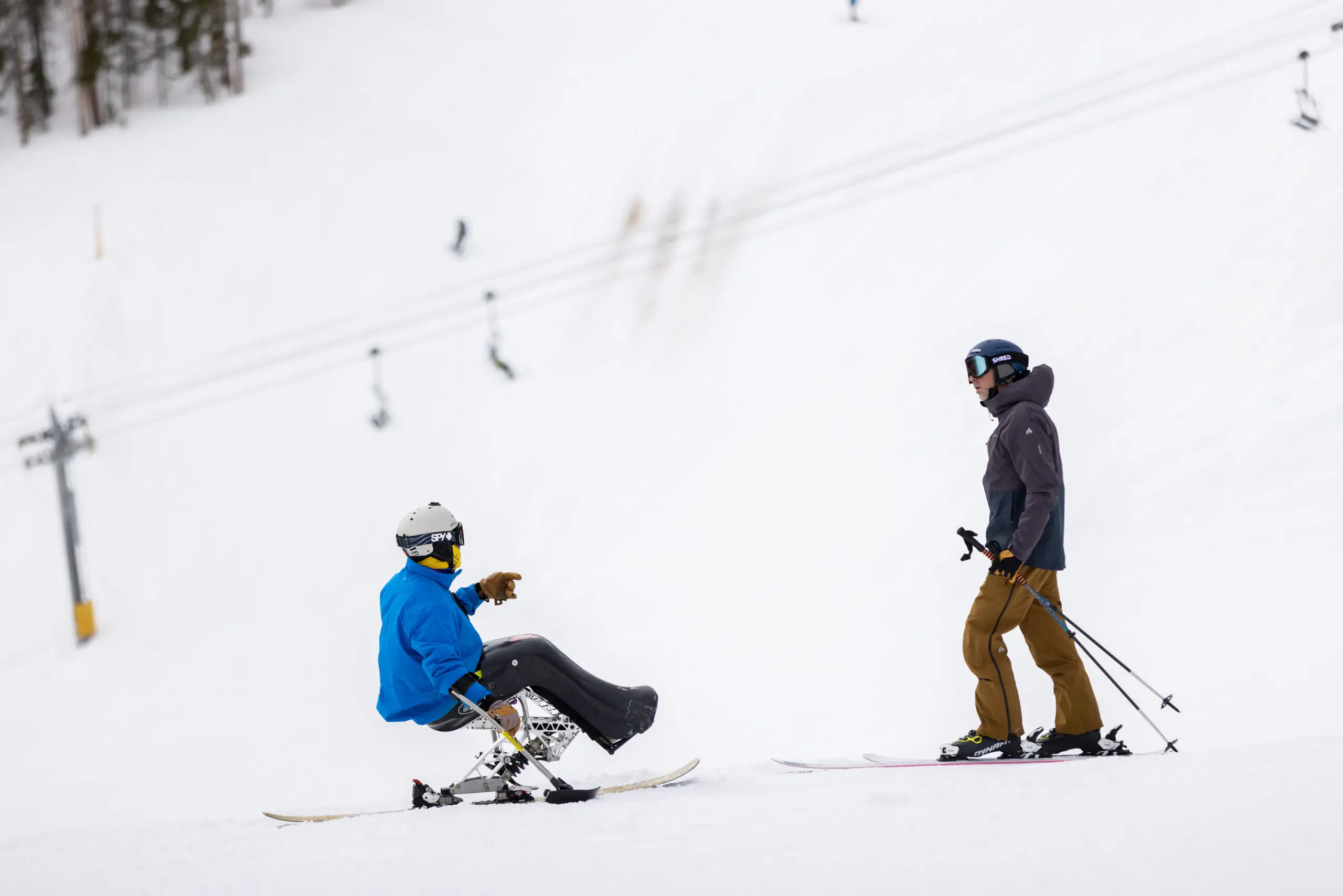



He’s fast too. Before we embarked on the sit ski experience we spent the morning freeriding the mountain together, chatting and skiing the most lovely and variable spring conditions. Every time I turn around to see where he is, looking back up the slope, he’s already shredding down, 50 yards ahead of me, and I straightline to keep up.
Strapping In, and Heading Out
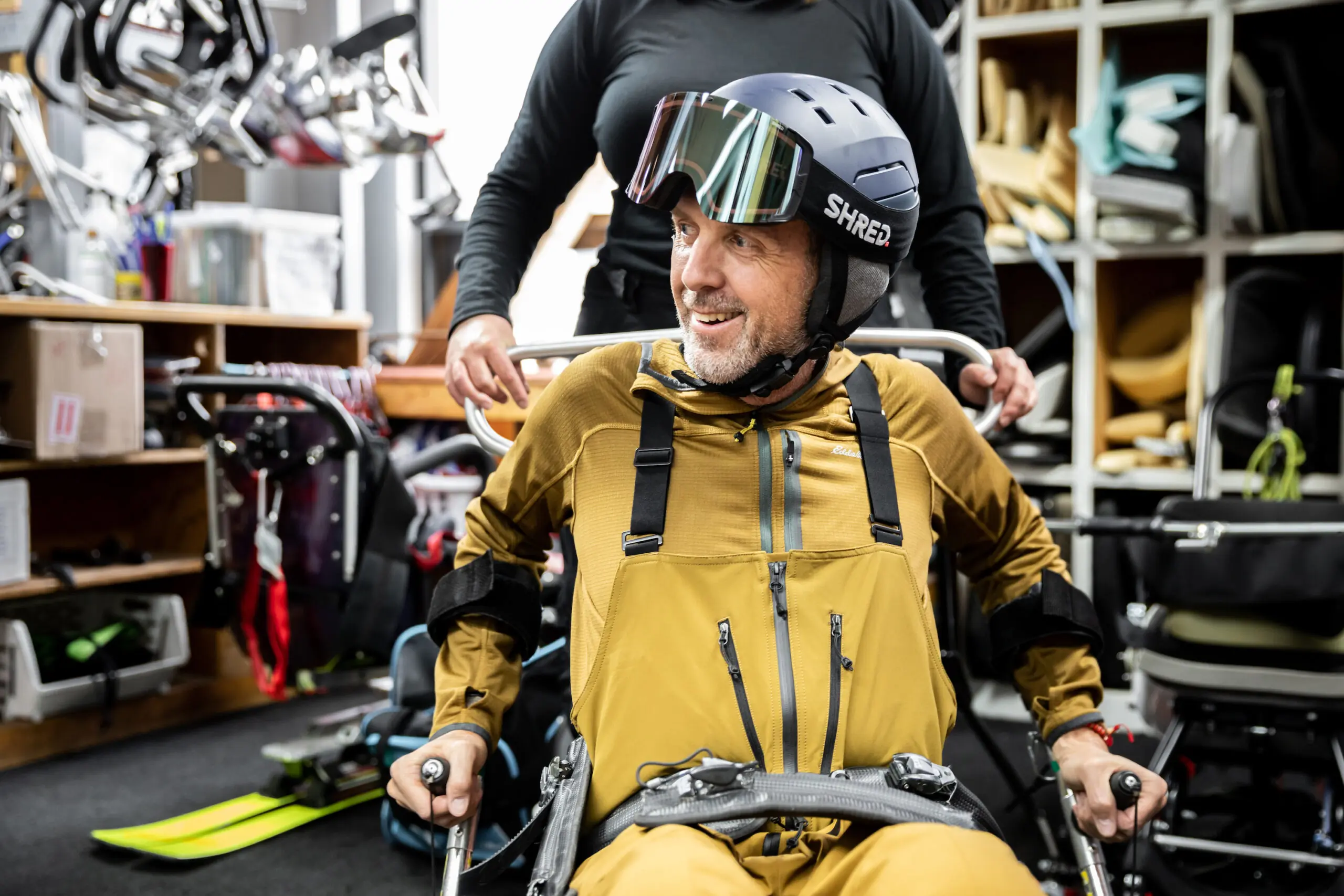



I have to admit, I was a bit nervous as three smiling employees at the NSCD pulled pins, lengthened tiny crutch-like devices called outriggers, and busily worked to make my 6’2″ frame fit into one of the organization’s sit-skis at their headquarters.
“Do you want to try the ski that Trevor uses?” the NSCD employees asked me in a friendly, unassuming manner. Um, yes? Trevor laughed heartily at me. “Yes! This is going to be awesome!” OK, I relented, I’ll start out on the double-ski sit-ski. I wanted to get my bearings first, before moving up to the mono-ski — a contraption very similar to the sit-ski that Kennison uses to hit rails and throw backflips off some of the largest terrain features in the world.
His personal sit-ski features a single 191cm Volkl Revolt, 121mm in width, with modified alpine style bindings with a block insert, connected with a large motorcycle shock underneath the seat, and a plastic shell that envelops his legs. This is something that protects him, and also keeps his legs dryer and warmer, instead of being exposed.
I quickly understood why Trevor had worked with Eddie Bauer the year before to develop a sit-ski apparel kit. When you can’t move your legs and you are strapped very tightly into the sit ski, it’s crucial to avoid any rubbing or pinch points. Especially when a skier lacks movement and sensation in the lower extremities, developing a sore spot from a zipper pull, for example, can lead to a serious injury. And staying warm is crucial.




After freeskiing all morning together, we headed back to the NSCD to get kitted up for the sit-skis. And we were off again. No sooner had we changed course did it start dumping a wet, heavy, typical spring snow that made our outing seem all the more like a legit adventure. Nothing like zero-vis and dumping pow to turn up the fear factor a notch!
Snow gathered in my lap quickly and I could only do so much to brush it off, my legs tightly tethered together inside the sit-ski. Whereas in whitewater kayaking I might be stuck and petrified, but can still wiggle my toes and scootch around — in the sit-ski I was completely static once strapped in.
And the humbling did not stop there. Getting onto the lift, while a breeze for Kennison, required two helpers and an attentive liftie to get my 175 pounds plus 50-plus pounds of sit-ski onto the chair.
“You’re able-bodied, just use everything you’ve got,” Kennison said again as he skis by me, my legs unable to move, shoulders and forearms aching as I learned. Much like stand-up skiing and other typically bipedal sports, a lot happens with subtle movements.
“Sit-skiing is exactly like stand-up skiing,” he reassured me. “It’s the exact same movements and the ski performs the same way on snow.”




As I watched Kennison head into the terrain park, I couldn’t help but think he’s pulling my chain. His ability to shred effortlessly and hit massive jumps — on a mono sit-ski — is impressive. While I may not have mastered the sport in one day — I will certainly never look at sit-skiers and the nuances of the sport the same again.
And I can’t wait to see what Kennison does next.
